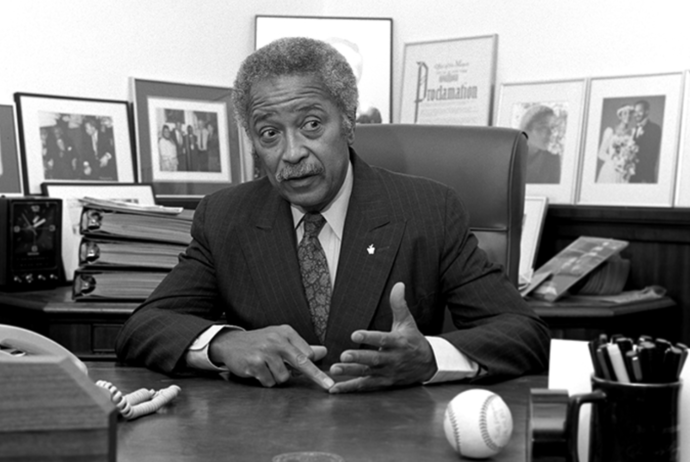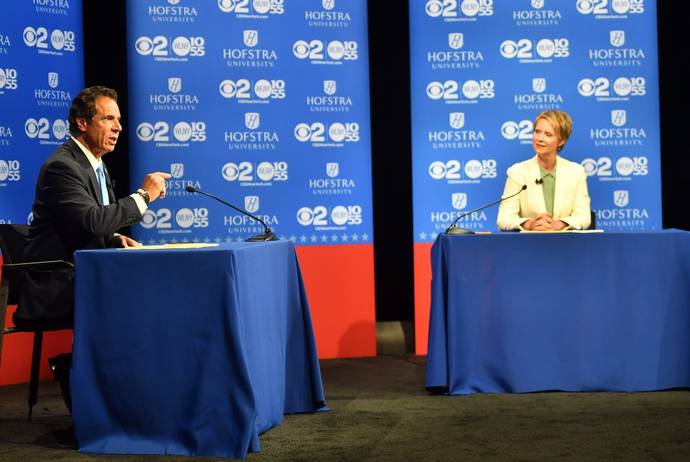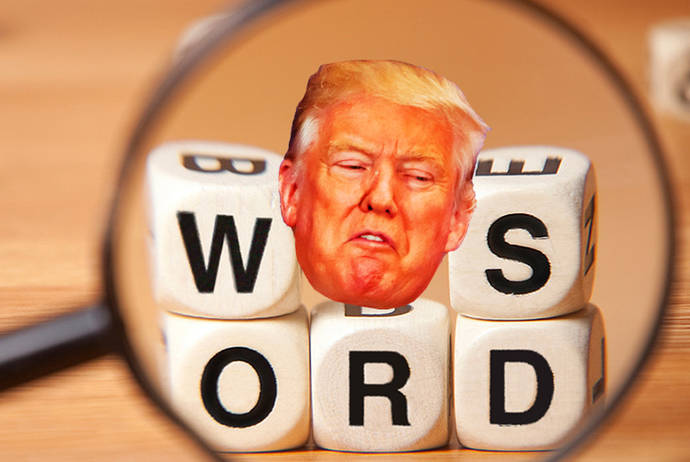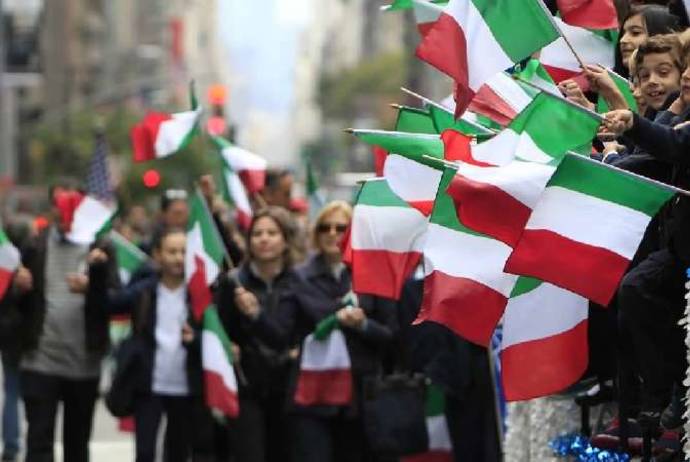A few months ago I attended an event to honor outstanding Italian American students at the CUNY Graduate and University Center. This occasion was one of many sponsored by the John Calandra Italian American Institute over the years. While enjoying the good company and collation, my good friend and colleague, Nick Spilotro, pulled me aside to ask me to address the Italian American Studies Committee of the United Federation of Teachers. He also graciously provided me with the title of my Italian Heritage and Culture Month presentation; "From Columbus to Cuomo." As he expected, I almost immediately began to change the text and the subtext of the Symposium. As I speak to you today, my title stands as not "From Columbus to Cuomo," but "Between Columbus and Cuomo." Who knows what tomorrow may bring. Perhaps next year's title will be "Between Queen Isabella and Geraldine Ferraro."
As a gubernatorial appointee to the New York Council for the Humanities, some people might assume that I am a close friend, neighbor, or relative of the governor. I am none of these. Speaking honestly, my two most momentous "Cuomoccasions" took place many years ago. The first was in 1977, when he came to Brooklyn College to talk on the student radio station while he was running in the Democratic Primary for Mayor of New York City. Vincent Fuccillo, a professor in the Political Science department, who was then Director of the Center for Italian American Studies, Mario DiSanto, an adjunct faculty member of the Sociology department and a community activist, and I had arranged to meet with him to offer our services as advisors concerning the City University of New York. We also intended to offer ourselves as campaigners. We thought to ourselves: "How could he resist such an array of talent?" Bursting with ethnic pride and hopefulness when we met Cuomo at the school, our egos were quickly deflated when he made it obvious that he felt he knew more about CUNY then we did. Like Christopher Columbus, Mario Cuomo is not easy to love.
The second Cuomomentous, and happier time in his presence was at the election night celebration after he had won the governorship of the State of New York. Then I stood with a group of ecstatic Italian American campaign workers chanting Ma- Re- O! In that campaign I helped in the Cuomo gubernatorial effort in Brooklyn while assisting in the bruising Congressional fight of Major Owens and the equally challenging Council manic race of Sal Albanese. In effect, I was trying to convince both African, and Italian-Americans that "Cuomo was the One." Cuomo's victory was Phoenix-like, rising from the ashes of the mayoral loss. Like Columbus, when Cuomo decides to take a trip, he doesn't turn back until he reaches his destination; even if it's not where he thought he was going. Lacking intimacy with the governor, I polled a number of people who know him much better than I do to discover what he is "really" like. After a brief survey I have concluded that the nicest thing I can say about Mario Cuomo can be summed up in the word "Matilda."
A few decades ago nations all over the world were trying to take credit for the discovery of America. Similarly, many groups were making competing claims as to Columbus' nationality, race, ethnicity, and religion. However, once the definition of the event was changed from a glorious "Discovery" to a tragic "Encounter," Italians were been left alone holding the bag, so to speak. This on-going "politically correct" historical circus has obscured what I believe is the most important contribution that Columbus has made to the human spirit. As is obvious, I do not believe in hero worship, but Christopher Columbus' accomplishments should have resulted in a celebration of what is possible when a person of humble estate has a dream and, against all odds, pursues it to its successful conclusion. Instead of fostering unity, his deeds have been used as a focal point for dissension, and often dishonest, historical revision.
My perspective on history is what used to be called "radical;" before radical became "radical chic," and chic became "politically correct." If you permit me, I'd like to mention the people "between" Columbus and Cuomo. We might call them the "silent majority," but it would be more accurate to label them as the "ignored majority." It is more important that the public knows the common history of these ordinary, average Italians rather than the incredible feats of a few of the most prominent. I must also warn you that I will be presenting here a rather biased "Sicilocentric" version of history.
I guess it was important for me to know as a child that Christopher Columbus was an Italian "like me?". However, when I was a child I didn't know I was Italian. While I was in my twenties, it suddenly dawned on me that my mother's maiden name was "Cangelosi," and that all my relatives on her side were Italian. When I confronted her with my revelation and asked why she never told us we were Italian, she matter-of-factly replied that; "We weren't". Puzzled at this response, I pursued the issue further. Much annoyed at my persistence, she finally explained that her mother had always said she wasn't Italian- but "Sicilian."
From the Sicilocentric perspective, it probably would have been better for me to know while I was growing up that my grandfather from Palermo sold watermelon by the slice on the Lower East Side of Manhattan, and also helped to dig the Panama Canal. And that my great grandmother had the courage to leave her husband, take her children, and travel to America alone to give them a better life. But I never knew this, even though I did know that "In 1492 Columbus sailed the ocean blue." I got the distinct impression from my mother that when she was growing up Italians frequently either hid their ethnic identity, or at least did not flaunt it among other groups. I don't think her reticence was due to shame. I think it was because of fear. If I were growing up during the first part of this century, I'd be afraid to let people know I was Italian also.
Unfortunately, the way by which Italians dealt with nativist reactions to them; from mere discourtesy and negative stereotypes to outright violence, was by creating and worshiping icons which appealed to their antagonists. Basically, Americans liked Christopher Columbus. He was a "good" Italian--tall, fair-haired, blue-eyed, almost WASPish. Therefore it was decided that Italian Americans should worship Columbus too. Ironically, the icon that Italians chose, or more correctly was given to them, is now being used against them. The persistent, overbearing, egocentric commoner who thought of himself as the divinely chosen saintly bearer of Christ to the New World has been recently transfigured by the popular and scholarly media into a virtual Don Corleone of the Age of Discovery. To the Sicilian political mind, the timing of the trashing of Columbus is perhaps a little too "convenient." Just when Italians as a group in America seemed to have "arrived," so much so that people were talking about the "Year of the Italians" or "The Decade of the Italians," the numero uno Italian is transformed from hero to villain. A Sicilological analysis of contemporary American politics would suggest that the confluence of the Quincentenary and a possible Cuomo presidential bid had something to do with such a radical re-analysis. Might it have been possible for Mario Cuomo to have ridden on a wave of Columbian celebrations all the way to the White House? We will never know for sure. Then again, perhaps it is merely a case of icons attracting iconoclasts.
My friend Professor Sal LaGumina, who teaches History at Nassau Community College, always reminds me that we reasonably successful Italian American have been able to reach our high goals because we have stood on the shoulders of "giants." Our ancestral giants were notprominenti, they are ordinary Joes and Josephines who struggled, and made it in spite of their official heroes. What is the value of the Columbus Celebration anyway? Matilda R. Cuomo, Chairperson of the New York State Christopher Columbus Quincentenary Commission has put it this way: "The Quincentenary offers us an opportunity to become better informed about our sacred history; to dispel the myths and fallacies that linger about both Columbus and the political culture of the Italy of the late fifteenth century, and to understand better the full extent of Columbus' contributions and the contributions of all ethnic groups that followed him into the New World."(p. 8)
One of the unfortunate unanticipated consequences of the Quincentenary has been a perversion of the concepts of multiculturalism, pluralism, and metaphor of the American Melting Pot. When I helped to develop a theme of "Multicultural Literacy" while serving on the New York Council for the Humanities, I was attracted to the value of how the study of many different groups would help a diverse people to appreciate a common humanity. However, because of the perverse nature of our ethnic, racial, gender, and religious political system, multicultural literacy has become multi-cultural warfare. Commenting on "1492 and Multiculturalism," Robert Royal, Vice President for Research and Olin Fellow in Religion and Society at the Ethics ad Public Policy Center in Washington. D.C., presents a conservative's view of the "Columbus-Discovery" debate:
"Multiculturalism, properly understood, then, has little to do with culture or cultures, and quite a lot to do with special interest politics. There is perhaps no better confirmation of this analysis than some of the phenomena surrounding this year's Columbus Quincentenary. One hundred years ago, in 1892, Columbus was celebrated as a modern man liberating himself from the theological inhibitions of Catholicism and the feudal restraints of Spain to help create protestant and democratic America. This interpretation had gained prominence earlier in the century through Washington Irving's popular but skewed biography, which aimed at making Columbus into the embodiment of nineteenth century American optimism and progress. This year, 1992, however, Columbus is being revised by many writers whose vested interest lies far from seeing him as a white progressive -- that issue is long dead. Now he is the prototype of early white European capitalist oppressors whose victims- blacks, Native Americans, women (communitarians and environmentalists all, of course) - are a veritable multicultural litany."
Permit me here to make a Hollywood analogy regarding the sea change in the mass media's projection of the Columbian image. Whereas once the enigmatic Christopher Columbus was sympathetically portrayed in film as a pious, dedicated, brave, and ultimately vulnerable character, in theaters today he appears as a sort of "Conan the Barbarian" played by the winner of an Arnold Schwartzennegger look-alike contest. Although, as Robert Royal noted, Christopher Columbus was a welcome celebrity in America around the turn of the 20th century, ordinary Italian Americans were certainly not afforded the same reception. As Columbus, and by extension, the Italian-Americans who he is seen to represent, is held to account for the "Crimes of European Imperialism," it might make some sense to bring some historical reality back into the debate. Italians were as victimized by "European Imperialism" as any other group of people. Parallels between African American, Hispanic, Native American, and Italian American experiences in the New World are numerous and should be the source of cooperation rather than part of the current multicultural political wrangling.
In order to see this, it is necessary for Italian-Americans and non-Italian-Americans to learn the real history of the vast majority of people of Italian descent in the United States. Italian Americans have much to be proud of, and nothing to be ashamed of in regard to their struggle to build a better life for themselves here in America. Toward the goal of expanding our awareness of the "real" history of Italian Americans, allow me to discuss a few aspects of the Italian American experience ably assembled and presented by Lydio Tomasi (1978). All of the historical events and issues which I will subsequently discuss should seem familiar to historically informed people, as they are the plagues visited upon cohort after cohort of poor Americans; whether they were immigrants or not. In 1906, speaking on "the Immigrant Problem" Robert DeCourcy Ward warned that Slavs, Italians and Jews, because of their high birth rates would "degrade" the "American race." Other contemporary critics of Southern Italian immigration warned that Italians were a threat to America because they were not "white." In fact it has been argued by some experts that the epithet "guinea" was "derived from a name attached to slaves from the western African coast."
The poverty of Southern Italy was so great during the latter half of the 19th century that a transoceanic traffic was created for "Italian Slave Children." The New York Herald reported on one of many raids on Italian padrones who either through contractual arrangements with parents, or by kidnapping, sent hordes of juvenile minstrels out to beg in the streets of New York and Philadelphia. In one cellar "home" for the children the police and reporters found "an abominable place, the breeding ground of disease and the abode of roaches and vermin." In 1870 there was a "Riot in Mamaroneck" New York where Irish and Italian laborers clashed over jobs. The end result of the battle as reported in the New York Sun was: "The Italian population of Grand Park was Driven Out-The Women and Children Sheltered in the Town Hall of Morrisania- Our Home War of Races.” As in the Balkans, and New York City today, violence is the fruit of ethnic politics in times of economic crisis.
In many cases in America Italian laborers were paid lower wages than "native whites" or "Negroes", making them more desirable as employees. This fact of life was the justification for many riots against Italian workers who were eager to work as "scabs" during strikes. Poor southern Italian peasants were viewed by Dixie plantation owners as potential replacements for freed black slaves. The Italian government even cooperated in several "experiments" at population transfers, which were unsuccessful. The major problem for the agribusiness community was that Italian peasants, once they learned of their relative freedom in the U.S., were too difficult to control. Late 19th and early 20th century American press accounts and descriptions of Italians conveyed the message that "dagoes" were "dangerous," "lazy," "filthy," "cruel," "ferocious," and "bloodthirsty." One Irish American critic in the 1880s noted, "The Italian was all too ready to ask for public assistance." And, that the absence of "manly qualities" separated Italian immigrants from others in America.
As with other minorities, the best indicator of racial hatred is the American custom of "lynching." Although there are several other incidents of Italians being lynched in America by racist mobs, the most infamous, but still little contemplated, took place in New Orleans on March 14, 1891. It was during the very same time when prominent American business and political leaders were planning for a gala celebration of their super icon, and founding Italian father, Christopher Columbus. Historian Patrick Gallo provides the following description of the massacre: "a mob of 6,000-8,000 people, led by prominent citizens, descended on the parish jail to get the "Dagoes." State and local law officers, and the governor, who was in the city at the time, stood by and did nothing, the mob hanged two of the suspects from lampposts, and lined nine of them up in front of the prison wall and blasted their bodies with rifles, pistols and shotguns, taking less then twenty minutes for their grim work."
The victims of the mob had been accused of killing the New Orleans Superintendent of Police, David C. Hennessey. His dying words were: "The Dagoes shot me...The Dagoes did it." He did not recognize his killers. Neither did any other witnesses. The Mayor of New Orleans therefore ordered the police "to arrest every Italian you come across." About 150 were arrested. When the courts began to find them innocent, the New Orleans Times-Democrat called for "All good citizens...to attend...a mass meeting...to take steps to remedy the failure of justice...," resulting in the largest mass lynching in American history. Reactions to the lynchings were as could be expected given the generally accepted stereotype of stiletto-wielding Italians. Theodore Roosevelt considered the lynching of eleven Italians a "rather good thing," and The New York Times agreed that "The Lynch Law was the only course open to the people of New Orleans." No one was ever arrested or prosecuted for the lynching and the incident was greeted with appreciation by most "real Americans" of the time. A few years later, in order to preserve American honor after a crescendo of international outrage, President Benjamin Harrison apologized to the Italian government for the slaughter of these and other Italians in American, and gave an indemnity of $25,000 to the families of eighteen victims.
Part of the problem caused by opportunistic, politically correct, Columbus bashing has been the tendency on the part of some to feel that they must "defend" both The Admiral of the Ocean Sea, and Spanish imperialism. This is unfortunate, first of all because Columbus, as all historical figures, must be judged by the norms of the time, and secondly because it gives the false impression that all those who defend him are insensitive to the terrible consequences of the European conquest for Native Americans. For example, in defense of Columbus Robert Royal reflected on the dual myths of noble savages and European barbarians. Speaking about the Caribs who Columbus and his men encountered, and ultimately destroyed, Royal notes: "the Caribs were not only conquering territory: as one modern historian puts it, the Tainos, or Arawaks were terrified of the Caribs because they were 'then expanding across the lesser Antilles and literally eating the Arawaks up.'"
As to how the Native American empires such as the Aztec and Inca were defeated he continues: "one of the reasons that the 550 conquistadors who came ashore in Mexico with Cortes were able to conquer the Aztec Empire, for example, is that 20,000 Indians joined the Spanish in order to liberate themselves from Aztec control and tribute, including the obligation to send young men to the capital Tenochtitlan for sacrificing to the Gods. The technical advantage to the Spanish of possessing clumsy rifles and a few horses against a million-person empire with a fierce warrior class pales in comparison to the support of native allies." Columbus is also indirectly accused of introducing male chauvinism and sexism into the New World, where some would have you believe pre-existed a sexual egalitarian utopia. Again, Royal notes: "The Caribs, according to mainstream scholarship, not only were cannibals but made a habit to capture and make concubines of the women from the Arawak tribes. The women were segregated from the women to such an extent that they spoke two different languages. Only the men spoke Carib; the women, even Carib women, spoke Arawak because of the large numbers of Arawak women captive among them." (p.4)
It seems to me that what is often being argued by misguided multiculturalists is that it is acceptable for Native American men to oppress Native American women but not for European men to do the same. Real social progress would be recognition that all oppression is wrong, not merely that which is politically and multiculturally incorrect. To bring this issue up to date, I have heard similar opinions presented in New York City today when ethnic leaders argue that the New York City Police Department has to be culturally sensitive to domestic disputes in "their" neighborhoods, and not interfere, for example, when men batter "their" women, or parents batter "their" children. Should we also legalize vendettas?
Columbus and 16th Century Europeans are also accused of lust. This demonstrates that our current intellectual fascination with sexual practices is not limited to alternating criticism and defense of Madonna. Historical voyeurism, however, has no ideological boundaries. Sometimes this prurient interest takes some convoluted turns. I participate in a reading group dealing with racism in American society. At a recent meeting, I perused a copy of Howard Zinn's new saga of America, A People's History of the United States, which allegedly provides the reader with an historical perspective taken "from the ground up." However, in the process of introducing the New World to the reader before its pollution by Columbus et al, he paints a sensual picture of "Tawny" naked Taino's welcoming Columbus on the shore. He then notes that they (women) were free and equal and emphasizes their sexual license as proof. In my humble opinion, this proves only that he and other males seem to think that most important aspect of one's human definition is the extent of ones sexual horizons, and that, especially, women should be defined by the degree of their accessibility. Crudely speaking, to many intellectuals, women were better off before colonization because they were, so to speak, "easier."
Showing that the dirty minds of men, politically correct or not, have changed little in 500 years, Amerigo Vespucci described Native Americans as "Epicurean": "They are so (liberal) in giving that it is the exception when they deny you anything; and, on the other hand, (they are free) in begging, when they show you their wives and daughters; and when a father or a mother brings you the daughter, although she be a virgin, and you sleep with her, they esteem themselves highly honored; and in this way they practise the full extreme of hospitality." (Washburn, p. 8) The politically correct multiculturalists act as though they "discovered" the oppression of Native Americans. They create the impression that, in the reactionary academic world, colonial abuses were a well-kept secret. As to the teaching of history, some especially shrill critics of the Quincentenary complain that Americans have been prevented from learning about the accomplishments of Native American civilizations, as well as the horrors inflicted upon them by Europeans. I must say that when I studied at Indiana University in the 1960s that certainly was not the case. I think it is more likely that the current generation of cultural and/or intellectual elites is trying to excuse itself for its own educational inadequacies.
The knee-jerk "Columbus made me do it." response probably was first blurted out by untenured college professors when they were being embarrassed by politically surging minority students who had invaded their classrooms. For example, when the Native American students asks the politically correct college professor why "their history" is not in the curriculum, the professor is inclined to say that he or she was "denied" the opportunity to learn about them by their stern white Anglo Saxon task masters, rather than the more honest: "I wasn't interested in your problems when I was in grad school." To quote from a small text I still keep in my basement, which was assigned to me "to be read in its entirety," by a very sour-pussed White Anglo Saxon Protestant mid-western professor while I was going to school in Bloomington on the G.I. Bill:
"But in spite of blind alleys, setbacks, and internecine feuds, Spain persisted in laboriously fulfilling her destiny of constructing, from the world of Indians, that greatest of empires. However, the people who were that empire were oddly ungrateful for their destiny. Their gods and homes were shattered, and from the enjoyment of living they were turned to working for it. They lost their subtle, mystic pride and forgot their very names, so that they called themselves by the Spanish names of Big Ears or Short Hairs. They died in massive numbers from measles, smallpox, cholera, and tuberculosis, from starvation, incredible overwork, from desperation, from sheer horror at inhumanities they could not believe even when they were happening. They died drunk, they died insane, they died by their own hands; they died, they said because their souls were stolen. They vanished in such numbers that African Negroes could not be shipped in fast enough to take their place. Their children were born dead, from syphilis; or their women, rotted with syphilis, became unable to bear children at all." (Brandon, 1961, p. 126)
I ask; could The Encounter be put more eloquently by someone more politically correct? I also ask, if someone like me, a lowly anti-intellectual sociologist, who did not major in American history, has been integrating such material in my classes since I began teaching in 1968, why is all this "news' to multiculturalists? In my humble opinion, the problem is not simply that educated and uneducated Americans don't know the history of Native Americans, or how they were abused by European conquerors. The real intellectual shame is that Americans don't know the history of any common people. Even the limited history being taught by multiculturalists about Native Americans tends to focus more on the glories of "advanced" civilizations in the New World such as the Aztec and Inca than of the everyday struggles of ordinary men and women.
Sadly, the current crop of social, political, and cultural critics who describe themselves as "liberal" or (even more self- servingly) "progressive," bemoan the loss of the Taino, only be-cause they were destroyed in a "politically incorrect" manner. The effect of politicizing history for partisan gain has been to widen the gulf between the various peoples of the United States who, having humble origins, have a great deal in common which can be demonstrated in historical analogies. This commonality is especially shared between Southern Italians, Native Americans, Hispanics, and African Americans. Despite the opportunity of shared experience becoming a source for multicultural dialogue however, the following pseudo-syllogism is currently in vogue: Columbus was Italian. He discovered America. Because of his discovery, the native people of American were cruelly exploited. Sicilian-Americans came from Italy. Therefore, Jerry Krase is responsible for the exploitation of Native Americans.
Palmer and Colton give a simple description of the socio-economic system in the Spanish New World. Their outline may help us to understand the basic similarities between peons in America and impoverished contadini in Southern Italy, where the Spanish ruled for centuries. They note: "The true character of the Spanish empire in America is not easy to portray. The Spanish government regarded its empire as existing for the benefit of the mother country. The Indians were put into servitude, to work in mines or in agriculture. The government introduced the encomienda, a kind of distant analogue to the European manor. The "lord" of the encomiendacontrolled the labor of his Indians, but according to the law he could not deprive them Indians of their own parcels of land, and he must make Indians work for him no more than four days a week, leaving them two days a week to work on their own parcels... How much the royal regulations were enforced in remote encomiendas is another question, on which answers vary." (p. 106)
They also note that Negro slavery was not as important in Spanish America as in other European colonies. Undoubtedly this was because of the availability of an exploitable native labor pool, as was also true in Southern Italy. Spanish aristocrats were also reluctant to emigrate to the New World and Southern Italy. In their colonies, Spaniards looked down on locally-born elites, as a result the quality of local leadership in both domains suffered greatly. Perhaps the greatest irony of he spectacle of Spanish Imperialist Christopher Columbus as an icon for Italian Americans, is that the vast majority of Italian Americans are descendant of people who were also victimized by Spain, which saw the people of Southern Italy people and their lands as valuable resources which could be easily harvested. Southern Italy, before the opening of the New World, was a major source of silver, lead, sulfur, and "petrol oil." Even before its forests were depleted, plantation economies produced such commodities for export as sugar, silk, and citrus. Southern Italian colonies were exploited until other places were found which were more profitable and where the people were easier to control.
According to Denis Mack Smith, the conditions in Sicily were so bad during the 18th century that King Charles III of Spain had difficulty enticing investors to come to Sicily. For example, he invited Jews, who had earlier been expelled from Christian lands, to return. In desperation he even allowed them to keep their Christian slaves while in Sicily! Another example of the effects of colonialism was that the population of Sicily fell from 1,000,000 in 1700 to 500,000 by 1800. Because foreign rulers were not interested in making the island self-sufficient, no major roads connected important cities, and no bridges were built to cross rivers even into the 19th century. The Sicilian agricultural system was operated to profit only the large landholders, and managers. Farming methods were used which guaranteed inefficiency, and periodic famine. They also guaranteed the impoverishment of peasants, who became tenant farmers and day laborers; forced to work on plantations, or latifundi. Clearly, Italian peasants had more in common with the exploited of the New World than with their own local middle-classes and petty aristocracies which occasionally clashed with each other over the limited economic surpluses, and even more limited social honor.
According to Smith, and others, the south of Italy was hampered by a backward ruling class, which sometimes reveled in its own ignorance. In the 19th century, poor Italians were even brought to the New World to replace freed slaves; for example, to fill the need for agricultural workers in the gulf states. At times, the various "Italian" governments even conspired with Americans to transplant groups of Italian agricultural workers into labor colonies to work on farms in southern states such as Louisiana, and Texas, where they filled a precarious racial niche between blacks and whites. If life in America was so hard on southern Italian immigrants, why did they continue to come? Part of the answer might be found in Smith's description of the sulfur mining industry in Sicily: "Labour was cheap in the mines, because the workers were not townsmen but drawn largely from farms in the off season." There were no incentives to improve primitive methods because of cheap labor. Into the early 1800's "the chief lack outside and inside the mines was wheeled transport. All the ore had to be brought to the surface on the backs ofcarusi, mostly small boys who were indentured to the trade by their families as what one can only call slave labour. Women, too, were employed as carriers, but the galleries were too low and hence boys were preferred." (p.385) In many industries, such inhuman conditions still existed into the 1880's:
"Inside the mines, most of the ore was still carried to the surface on the backs of children whose daily stint might be thirty journeys to the surface and who worked anything from six to twelve hours a day. A government commission in 1875 recommended a total prohibition against using women, or children under 14, as carriers; but a first tentative law in 1879 merely forbade the employment of girls and allowed that of boys only if the were over ten years old. Even this could not be enforced, and any further attempt to reduce child labor encountered dozens of well-organized representations from mine owners, municipalities and chambers of Commerce. These representatives claimed to speak in the interests of the carusi themselves and their parents, but it was also stated specifically that without child labour, most mines would be unprofitable. Few people made it their business to consider whether this cheap labor, by preventing mechanisation and keeping inefficient mines productive, was not a major economic as well as a moral disaster. The contratto di carusato was unknown elsewhere in Italy, even in the equally poor mining region of Sardinia; though in the pumice caves of the Sicilian Lipari islands, according to a private report by Norman Douglas in 1895, children were given some of the more strenuous jobs and could be employed as early as the age of five.
The effects were appalling. The mining regions of Sicily had more homicides than anywhere in Italy, and much of their male population was totally unfit for military service. Many miners lived in underground grottos; others, and many of the children, lived permanently inside the mines. Labour was regularly organized by mafiosi whom payments were due from both sides of the industry, and a Caruso who fled from a mine without redeeming his indenture did so at his peril." (p. 476)
Responding to the exploitation of Native American populations in the 16th Century were individuals like Julian Garces, Bishop of Tlaxcala, better known as "de Las Casas," Obviously Sicily needed its own Las Casas. There has been a long line of individuals battling against the continual exploitation of Southern Italy and its long-suffering peoples. For example, in the 20th Century, some people thought that social activist and anti-mafia crusader Danilo Dolci would spark a movement toward salvation and renewal for Sicily, and by extension the south. (See: Mangione, 1985). Over the most recent decades there have been several highly publicized, and dismally unsuccessful, governmental efforts at a southern economic rinascimento. If you follow the international news today, you will become painfully aware that the common folk of Southern Italy continue to be victims of governmental incompetence, and indifference to their social, political, and economic plights. In the 20th century, many Southerners still have to leave home to find economic opportunities. Even more regrettably, large sections of the Mezzogiorno today are not unlike the slowly modernizing third worlds of Central and South America, where corrupt and inefficient government, and drug dealers hold sway. Yet, in 1992, Italian Americans are being subtly, and not so subtly, victimized by Columbusbashing.
Consider these excerpts from a New York Newsday article "Seeing History from the Other Side," by Warren Goldstein, who teaches "history" at SUNY/College at Old Westbury, New York. First he introduced the subject by saying:
"Although I studied to be an American historian for a decade, it never occurred to me that one of the most important things I would ever do in a classroom would be to discuss the story of Christopher Columbus. I had never even been interested in Columbus, and was bored by the battles over a word I could barely pronounce: the Quincentenary." Later in the article, after noting a few of Columbus' sins of "greed and mayhem", he makes it more ethnically relevant, and equally insulting, by pointedly noting: "Others worry about how to broach the subject in their families. One young man said flatly, 'My father's from Italy and there's no way I can tell him this. Just no way. Period.' Another tried to talk to her Italian-American uncle the weekend after our discussion. He wanted no part of her story. Who delights in learning the faults of a national hero?"
Allow me to end my ramblings concerning the void Between Columbus and Cuomo with a few observations. If American historians were better educated about their subject matter, and did a better job teaching it, then their students wouldn't have to wait 500 years to be told the truth. And, if we Italian Americans were better informed about our own history, that is, the history of our actual parents and grandparents, we would be less likely to feel the need to be defensive about the crimes and misdemeanors of our illegitimate fathers. Wherever I present my own research on how the physical environment of Italian Americans can be traced to their ancestral homes, I learn more from audience then they do from me. I hear stories of "ordinary" lives. I never tire of listening to them, but they should be documented in some way, so that they will not be forgotten. Perhaps my efforts will help fill the void "Between Columbus and Cuomo" with the simple stories of Italian men and women who have contributed so much to American life. It is fitting that a union organization has given me the opportunity to speak on this topic. History has been frequently been used as a weapon against groups like Italian Americans whose real history has been essentially that of the working class. If the controversy concerning the Columbus Quincentenary has taught me one thing, it was that forgetting about the past, is just as dangerous as lying about it.
REFERENCES
William Brandon, The American Heritage Book of Indians. New York: Dell Publishing Co., 1961.
Matilda R. Cuomo, "Celebrating the Quincentenary," Culturefront May, 1992, pp. 7-8.
Patrick Gallo, Old Bread, New Wine. Chicago: Nelson-Hall, 1981.
Gianni Granzotto, Christopher Columbus, Norman, Oklahoma: University of Oklahoma Press, 1987.
Jerre Mangione, A Passion for Sicilians: The World of Danilo Dolci. New Brunswick, New Jersey: Transaction Books, 1985.
R.R. Palmer and Joel Colton, A History of the Modern World to 1815•, Fifth Edition. New York: Alfred A. Knopf, 1978.
Robert Royal, "1492 and Multiculturalism," The Intercollegiate Review, Spring 1992, pp.3-10.
Denis Mack Smith, A History of Modern Sicily, London: Chatto & Windus, 1968.
Lydio Tomasi (ed.), The Italian in America: The Progressive View, 1891-1914. New York: Center for Migration Studies, 1978.
Amerigo Vespucci, "The Full Extreme of Hospitality", pp. 60-8. in Wilcomb E. Washburn (ed.),The Indian and the White Man. Garden City: Anchor Books, 1964.
“Between Columbus and Cuomo: The Italian Experience in America”
October 29, 1992
Jerome Krase, Ph.D.
Professor of Sociology
Brooklyn College of
The City University of New York
Keynote Address at the Seventeenth Annual Symposium
United Federation of Teachers, Italian American Studies Committee
United Federation of Teachers Headquarters,
260 Park Avenue South, New York, New York







































